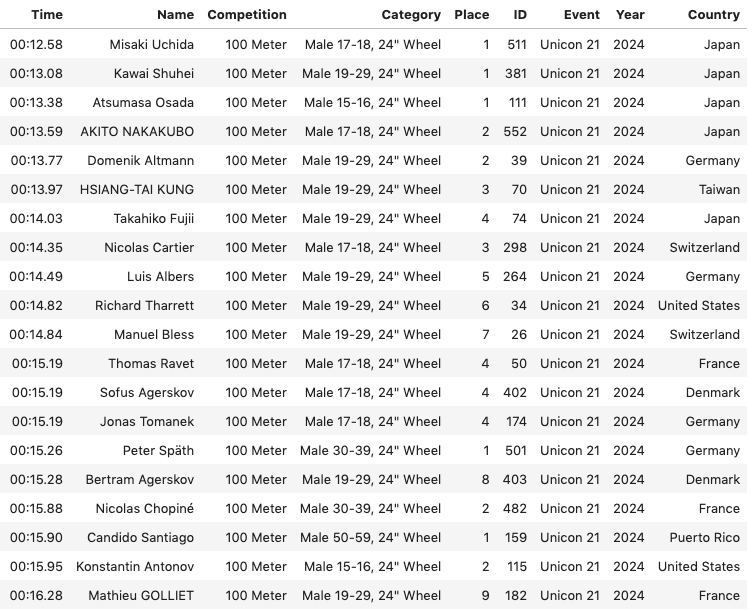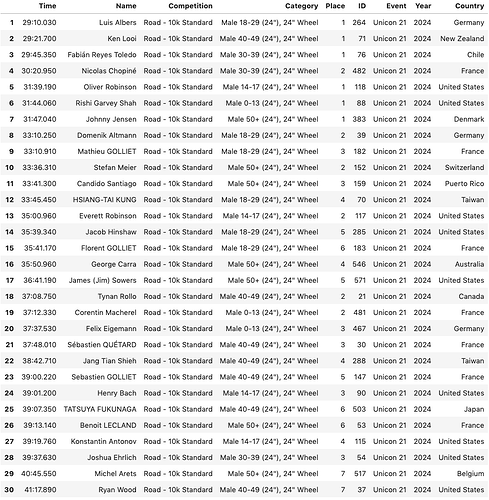If you are going to compete in track events, you have to race in the 24" class.
You may choose between the 24" class and Unlimited class for the 10k race only.
Yes, the difference is significant. Let’s break it down:
Actual Wheel Size
A typical 24x2" wheel has a diameter of 600–605 mm. The Mad4One (and similar track unicycles) 26x1" wheel has a diameter of almost exactly 618 mm. That translates to about a 5–6 cm (2"+) difference in distance per wheel revolution.
For perspective:
In an IUF Slalom race, a skilled rider on a Nimbus 24" rim with a Kenda 1.95" tire takes 44 wheel revolutions. The same rider on a Mad4One Race ISIS 26" (24" IUF) with a Schwalbe RightRun 26x1" tire takes only 42 revolutions. IUF Slalom is about 80m long.
These are not theoretical calculations — I actually counted them.
Switching from a 24x2 to a 26x1 gave my athlete an average improvement of 1 second.
Did it help him win an Expert Unicon medal? No, but it got him into the top 20.
You can do the math to estimate the difference in wheel revolutions over an 800m race or even a 10k event.
Tire Width
Narrow tires are more difficult to control — especially when staying within a lane.
We often debate whether to use a 24x2 or a 26x1 for more technical races, such as the one-footed event.
Narrow Hub and Slim Cranks
There are mechanical advantages to having a small Q-factor on the track.
Mad4One is pretty picky about this, and you should go with them if you want to get that advantage.
That said, the narrow hub doesn’t make as much of a difference as the 618 mm vs. 600 mm wheel diameter — and you need the skill to really benefit from it.
Should you buy a 26x1?
I don’t know. If you’re competing for a medal, you probably should.
But keep in mind: you might need to bring both your 24x2 and 26x1 to Unicon.
Do you have that option?
My Mad4One Race only gets assembled for 1–2 months each year, shortly before competitions. I do travel with two 24" class unicycles, and no larger-size wheels, thus limiting road distance options.
![]()




